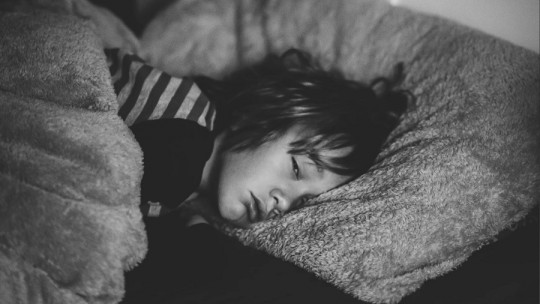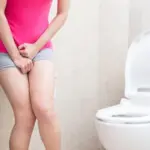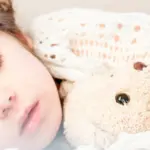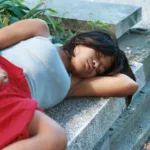
Enuresis is part of elimination disorders.corresponding to the group of psychopathologies related to the stage of childhood and development. Its manifestation is often the external sign of some type of internal and intense emotional discomfort of the child.
Although bedwetting is a very common phenomenon In childhood, this disorder is relatively poorly understood. Far from maintaining the unfounded belief that this type of behavior is committed as voluntary and malicious acts on the part of the child, we will now go on to explain the main characteristics that define this disorder.
What is enuresis?
Enuresis can be defined as clinically significant difficulty in adequately exercising sphincter control in the absence of a cause, either organic or derived from the consumption of certain clearly observable substances.
Among the diagnostic criteria, it stands out that the child must perform such elimination behavior in inappropriate situations involuntarily with a frequency equal to or greater than
twice a week for at least three months consecutive.
Furthermore, this type of behavior must generate significant emotional distress in different areas of the child’s life and cannot be diagnosed before five years of age.
Comorbidity and prevalence
Usually, the presence of sleepwalking, night terrors and, above all, sleep problems are associated with the diagnosis of enuresis. deterioration of self-esteem, misunderstanding and parental criticism. As a consequence of these circumstances, the child is isolated from participation in activities that involve outings such as excursions or camps.
The prevalence in each sex varies depending on age, being higher in younger boys and older girls, although the general proportion fluctuates.
around 10% of the child population. Nocturnal enuresis is the most common. In most cases, spontaneous remission occurs, mainly of the secondary typology, but it can also continue until adolescence.
Types of enuresis
Enuresis can be classified according to three different criteria:
moment when they happen sphincter uncontrollable episodeswhether it has preceded a time in which the child was able to control peeing and whether it is accompanied by other concomitant symptoms.
Based on these criteria we can establish the following typologies of enuresis.
1. Daytime, nocturnal or mixed enuresis
Daytime enuresis occurs during the day and is related to anxious symptoms, more common in girls. The nocturnal type is more common and is linked to images referring to the act of urinating during REM sleep. Cases of mixed enuresis are those in which the episodes occur both during the day and at night.
2. Primary or secondary enuresis
The qualifier “primary” is applied if the child has not previously experienced a stage of sphincter control. In the case of enuresis
secondary if a control stage has been observed in the past of a minimum duration of six months.
3. Monosymptomatic or polysymptomatic enuresis
As its name indicates, monosymptomatic enuresis is not accompanied by any other type of symptoms, while polysymptomatic enuresis is accompanied by
other urinary manifestations such as frequency (increase in the number of daily urinations).
Causes
Without being able to count on a general consensus today on what factors cause enuresis, there seems to be some agreement on establishing an interaction between
biological and psychological causes.
There are three types of explanations that shed light on the origin of this disorder.
1. Genetic theories
Genetic research has found that 77% of children diagnosed with enuresis belong to families in which
both parents presented this alteration during their childhood, compared to 15% of children from families without a history.
Furthermore, greater correspondence has been found between monozygotic twins than between dizygotic twins, which indicates a significant degree of genetic determination and heritability.
2. Physiological theories
Physiological theories defend the
existence of altered bladder functionas well as insufficient bladder capacity. On the other hand, a deficient action has been observed in the secretion of the vasopressin or antidiuretic hormone, predominantly during the night.
3. Psychological theories
These theories advocate the presence of emotional or anxiety conflicts that lead to the loss of sphincter control, although some authors indicate that it is the enuresis itself that motivates these emotional alterations.
It seems that the experience of
stressful experiences such as the birth of a siblingseparation of parents, death of a significant person, change of school, etc. may be associated with the development of the disorder.
The behaviorist current proposes a process
inadequate learning of hygiene habits as a possible explanation for enuresis, also stating that certain parental patterns can negatively reinforce the acquisition of sphincter control.
Intervention and treatment
Various are the
treatments that have proven effectiveness in enuresis intervention, although it is true that multimodal therapies that combine several of the components set out below have a more acceptable success rate.
Below we will describe the intervention techniques and procedures most currently used in the treatment of enuresis.
1. Motivational Therapy
In enuresis, Motivational Therapy focuses on
decreased anxiety and emotional disturbances comorbid with the disorder, as well as working on enhancing self-esteem and improving family relationships.
2. The Pee-Stop Technique
The “Pee-Stop”
It is based on the operant technique of Token Economy. Once the anamnesis has been taken and the functional analysis of the case has been prepared through interviews with the parents and the child, self-recording of the evolution of the enuretic episodes during each night is prescribed. At the end of the week, points are counted and, if a certain goal has been reached, the child receives a reward for the achievement obtained.
Simultaneously, follow-up interviews are carried out with the family, advice is provided to increase the effectiveness of bladder function and increasingly more advanced objectives are gradually proposed.
3. Dry Bed Training
This intervention program proposes a series of tasks divided into three differentiated phases in which principles of operant conditioning are fundamentally applied: positive reinforcement, positive punishment and overcorrection of the behavior.
At first, together with the installation of a Pee-Stop device (sound alarm), the child is instructed in the so-called “Positive Practice”, in which the subject
you will have to get out of bed to go to the bathroom repeatedly, drink a limited amount of liquid and go back to bed and start sleeping. After an hour you are woken up to check if you are able to withstand the need to urinate for longer. This procedure is repeated every hour that same night.
In case of wetting the bed, Cleaning Training is applied, by which the child must change both his own clothes and the clothes on the bed that have been soiled before going back to sleep.
In a second phase, the child is woken up every three hours until he or she is able to
add seven consecutive nights without wetting the bed. At that point, the patient moves to a final phase in which the alarm device is removed and he or she is allowed to sleep through the night without waking him or her. This last phase ends when the child has achieved a total of seven consecutive nights without wetting the bed.
For each successful night you are positively reinforced to the child and for each night of non-control Positive Practice must be applied immediately.
4. Bladder distention exercises
They consist of training the child to
go increasesndo urine retention time gradually. The child must notify the parents when he feels the urge to urinate and must also periodically measure and record the volume of liquid retained in the bladder on each occasion prior to urination.
5. Pharmacological treatments
Pharmacological treatments, such as Desmopressin (antidiuretic) or Oxybutin and Imipramine (muscle relaxants to increase bladder capacity), are moderately effective in the treatment of enuresis, since they
they get lost improvements as soon as treatment is stopped and have considerable side effects (anxiety, sleep disturbances, constipation, vertigo, etc.).
6.Multimodal treatments
These intervention packages
They combine different techniques explained in previous lines and they present superior effectiveness since they address the alterations produced in the cognitive (psychoeducation of the disorder), affective (coping with anxiety, fears and worries generated), somatic (pharmacological prescription), and interpersonal (coping with family stressors) areas. and behavioral (direct intervention of enuretic behavior).
Stopping bedwetting
As has been seen, enuresis is a complex psychopathology that requires a set of interventions that involve the entire family system.
It is very relevant
application of behavior modification techniquesspecifically the “Pee-Stop” and Cleaning Training, although it is equally essential to delve deeper and determine what emotional factors are causing such symptoms.








